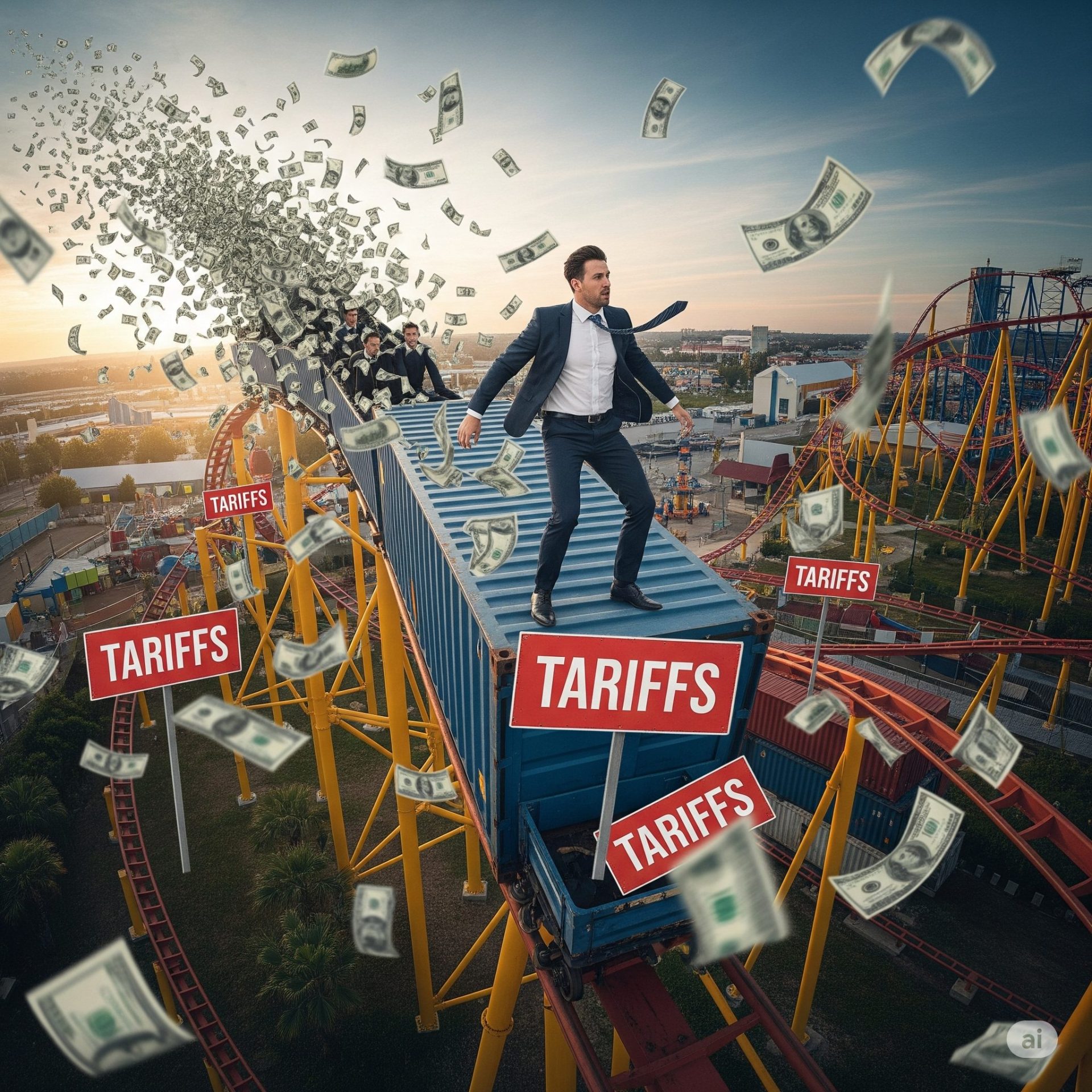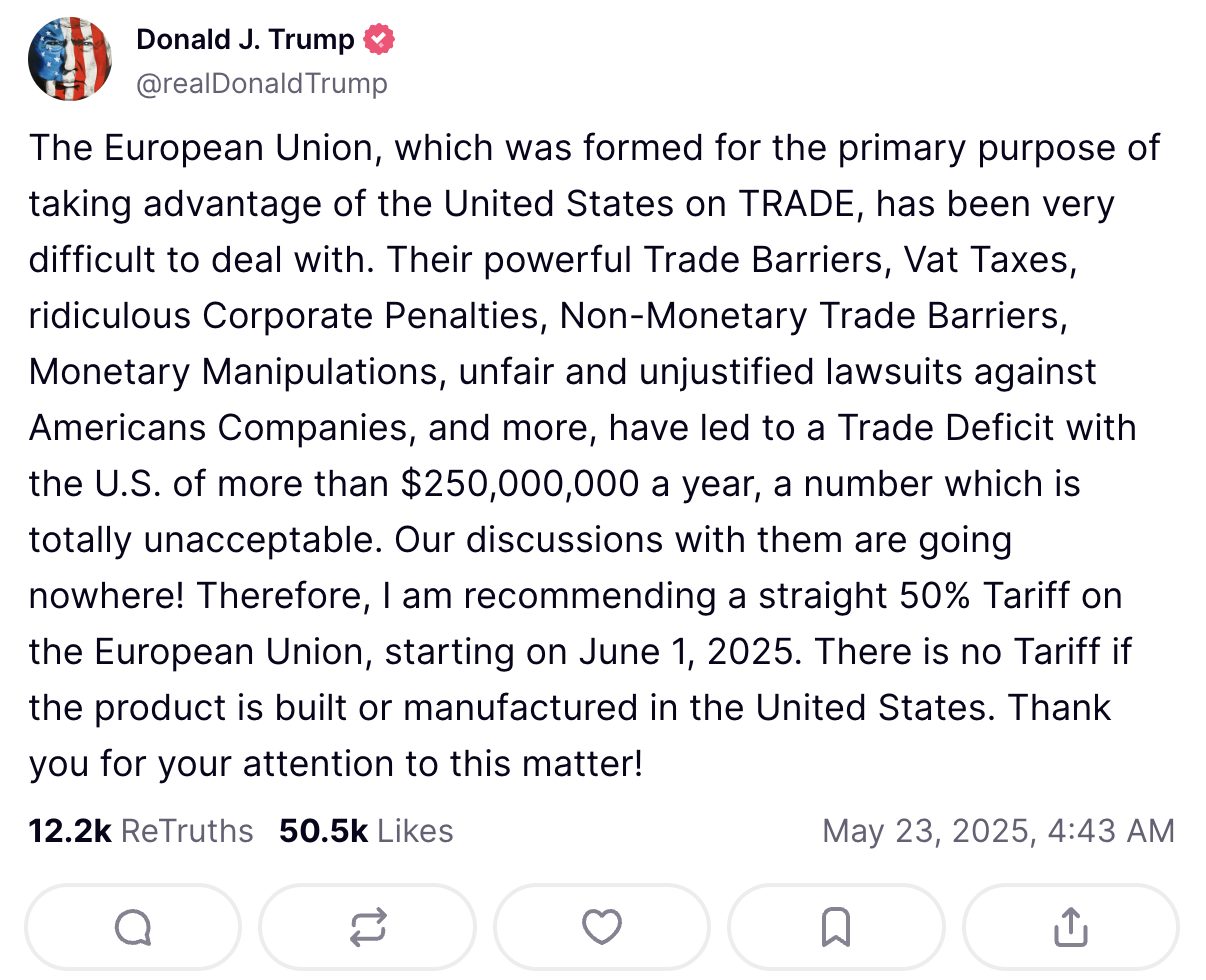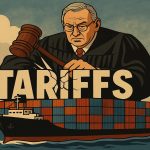EU Tariff & Trade Deal Rollercoaster

On Friday, President Trump put pressure on the European Union (EU). With trade deal discussions apparently going nowhere, he threatened a 50% tariff on EU goods starting June 1st. It sparked emergency calls and, if not a frantic, at least a stressful weekend for EU leaders who called upon the European Commission president to negotiate with the Trump Administration. With sudden urgency appearing from the EU to negotiate, President Trump put a month plus of delay on the 50% tariff to July 1st.
For some shippers importing from the EU, this creates a new window of urgency for shipping. For five weeks, tariffs on goods from the EU should be steady at President Trump’s 10% baseline amount. After that is a question mark. President Trump certainly is not afraid to levy tariffs, but if negotiations appear more positive over the next month than they’ve been with the EU, the 50% tariffs should not go into effect. Or does an actual deal have to be reached by then?
That does leave a great deal of uncertainty for shippers, which is why some importers of EU goods will push to get importing done in this new window. While my personal expectations are the 50% tariffs will not happen in July, no one can know whether it will or even if President Trump will announce and impose a different tariff amount. We do know he has several complaints about the trade situation with the EU…
President Trump’s EU Trade Complaints & 50% Tariff Announcement
In his usual style, President Trump took to Truth Social to publicly announce the June 1st 50% tariff plan or threat, however you want to look at it, on goods from the EU.

In his post, the president listed off complaints about trade with the EU. His list of complaints include trade barriers, monetary manipulation, and unjust lawsuits against American companies leading up to a $250 million plus trade deficit per year. He went so far as to say the primary purpose for the formation of the EU was taking advantage of the United States on trade.
Here’s what he wrote:
The European Union, which was formed for the primary purpose of taking advantage of the United States on TRADE, has been very difficult to deal with. Their powerful Trade Barriers, Vat Taxes, ridiculous Corporate Penalties, Non-Monetary Trade Barriers, Monetary Manipulations, unfair and unjustified lawsuits against Americans Companies, and more, have led to a Trade Deficit with the U.S. of more than $250,000,000 a year, a number which is totally unacceptable. Our discussions with them are going nowhere! Therefore, I am recommending a straight 50% Tariff on the European Union, starting on June 1, 2025. There is no Tariff if the product is built or manufactured in the United States. Thank you for your attention to this matter!
There are a couple things in there worth special note that point toward President Trump’s goals with his tariffs strategy. He highlights a specific number ($250M) with the trade deficit the U.S. has with the EU and, seemingly unnecessarily, he points out there is no tariff on products “built or manufactured” in the U.S.
Of course the U.S. has no tariff on U.S. goods! The only reason to bring that up is to emphasize an advantage for U.S. goods. One of his priorities is to increase U.S. manufacturing. With the tariffs, he incentivizes domestic sourcing/U.S. manufacturing – or at least disincentivizes sourcing goods from other countries. The deficit emphasis through specification highlights his goal of reducing U.S. deficits, particularly with the EU in this case.
The president wants the trade deals his administration negotiates to help with these goals. And, obviously, the tariffs are meant to create leverage to get other countries to make such deals with the U.S. quickly, speaking of which…
EU’s Reaction This Weekend
Several news outlets reported about how governments across the EU have shown they want a quick deal with the U.S. to ensure the 50% tariff doesn’t happen. Andy Bounds in Brussels, Amy Kazmin in Rome, Barney Jopson in Madrid and Jude Webber in Dublin wrote in a Financial Times article:
Several EU governments have signalled they want a quick deal with the US to head off Donald Trump’s threat of 50 per cent tariffs on the bloc, urging the European Commission to keep talking to Washington rather than taking the path of confrontation.
The reporters went on to write that Italian Prime Minister Giorgia Meloni had an emergency call with President Trump hours after his announcement, and then she called EU Commission President Ursula von der Leyen. Meloni urged von der Leyen to resolve differences with President Trump through negotiate. Several other EU leaders also urged the commission president to do so, the reporters wrote.
Additionally, Bounds, Kazmin, Jopson, and Webber listed France, Spain, Ireland and Belgium as countries that “also welcomed the bid to accelerate talks and avoid escalation of the transatlantic trade war.”
Jack Phillips reported in an Epoch Times article:
A call between Trump and European Commission President Ursula von der Leyen on Sunday led to the delay until July.
EU Commission spokeswoman Paula Pinho told a news conference that von der Leyen and Trump agreed to fast-track the negotiations. The result of the call means that “there is now also a new impetus for the negotiations, and we will take it from there … from our side, we always said that we were ready to make a deal,” she said.
Thus, President Trump succeeded in getting seemingly stalled negotiations moving with his EU tariff threat.
President Trump’s Reaction

Not surprisingly, President Trump is pleased with the immediate result he got from announcing a 50% tariff on the EU. His tone on the subject shifted dramatically on Truth Social:
I was extremely satisfied with the 50% Tariff allotment on the European Union, especially since they were “slow walking (to put it mildly!), our negotiations with them. Remember, I am empowered to “SET A DEAL” for Trade into the United States if we are unable to make a deal, or are treated unfairly. I have just been informed that the E.U. has called to quickly establish meeting dates. This is a positive event, and I hope that they will, FINALLY, like my same demand to China, open up the European Nations for Trade with the United States of America. They will BOTH be very happy, and successful, if they do!!!
His comment on being empowered to “SET A DEAL” seems like a not-so-veiled threat to put tariffs in place on EU goods if he can’t get a satisfactory trade deal from the EU.
But both sides, the Trump Administration and the EU commission, are giving lined-up quotes that trade deal negotiations are being fast-tracked.
Conclusion for Shippers
The 50% tariff on goods from the EU are postponed until July. Those who want to be extremely safe may choose to import from the EU over the next five weeks to ensure the 10% tariff rate. However, the EU has shown a willingness to act to avoid the U.S. imposing a 50% tariff.
That leads me to believe it unlikely for a 50% tariff to hit in July. Nevertheless, it is not out of question. There will be negotiating hurdles to overcome.
For example, as Phillips reports in his Epoch Times article, the EU wants even President Trump’s baseline tariff removed from EU goods, which the president does not appear inclined to do:
The EU has offered Trump a “zero for zero” deal in which tariffs would be removed on industrial goods including automobiles, but the Trump administration has said it will not lower tariffs below a 10 percent baseline imposed on almost all its trading partners. Trump has also announced broad tariffs of 25 percent on steel and automobiles.
President Trump also has that list of complaints, including trade barriers, monetary manipulation, lawsuits, and the trade deficit. If there’s movement he could get from the EU on these issues to go with the zero for zero tariff deal, perhaps it could be a possibility. But tariff revenue is also a goal the president has spoken of with his tariff strategy.
I would not recommend shippers expect tariffs on goods from the EU to get reduced to 0%. However, President Trump did say if the EU opens up European Nations for trade with the U.S., it’ll be very happy and successful. Who knows exactly what that would look like in terms of numbers and details in a trade agreement with the European Union.





